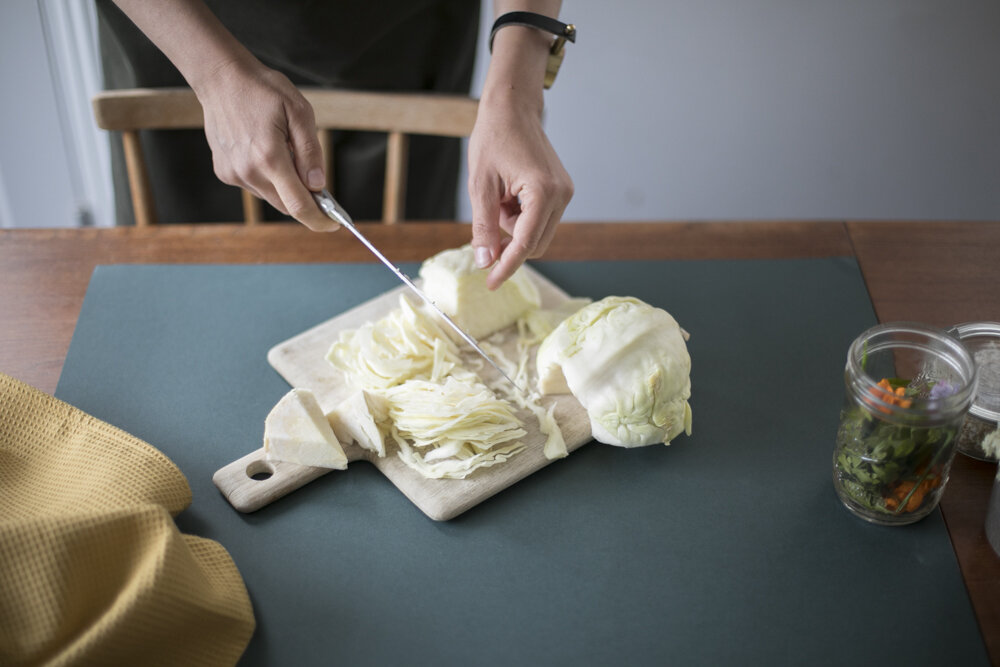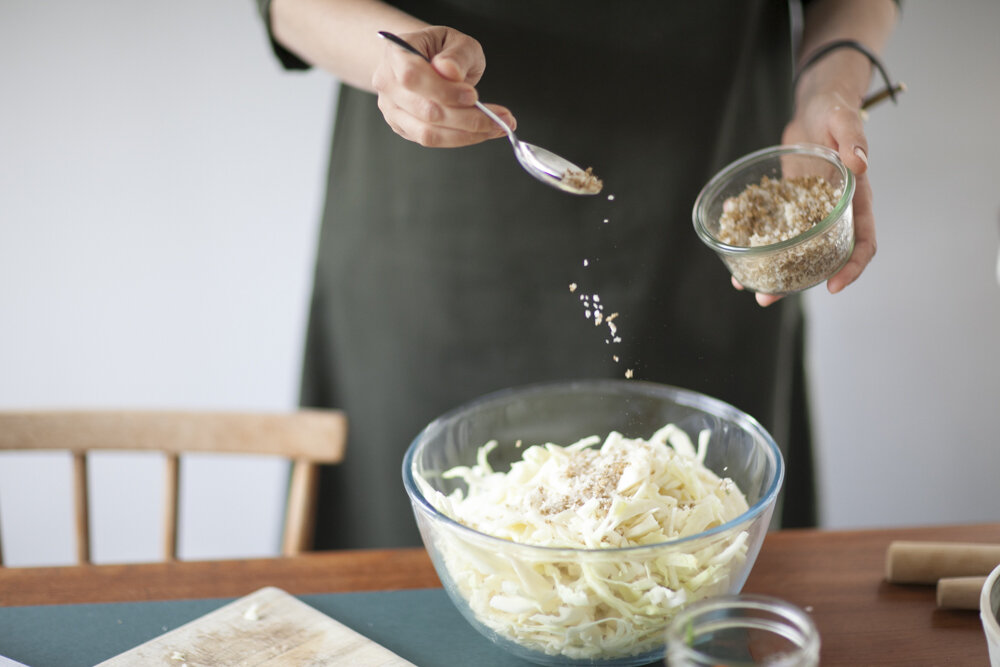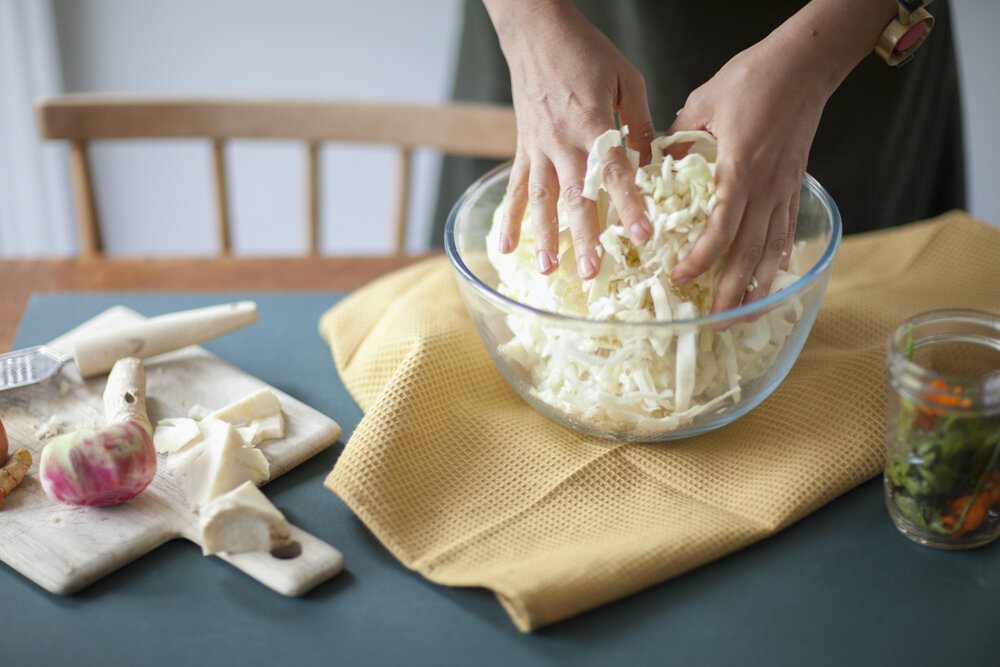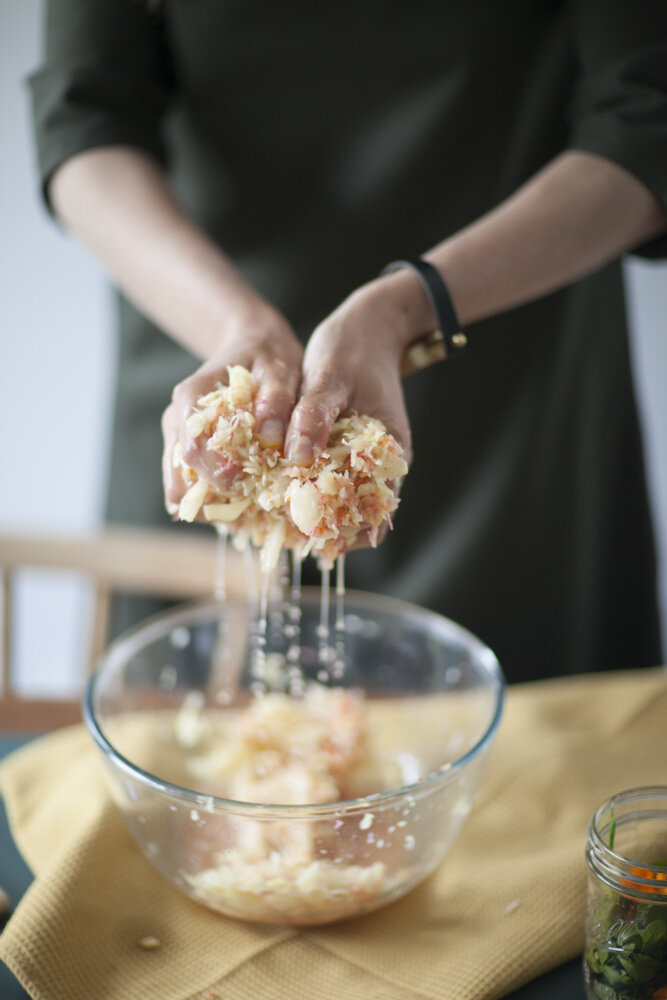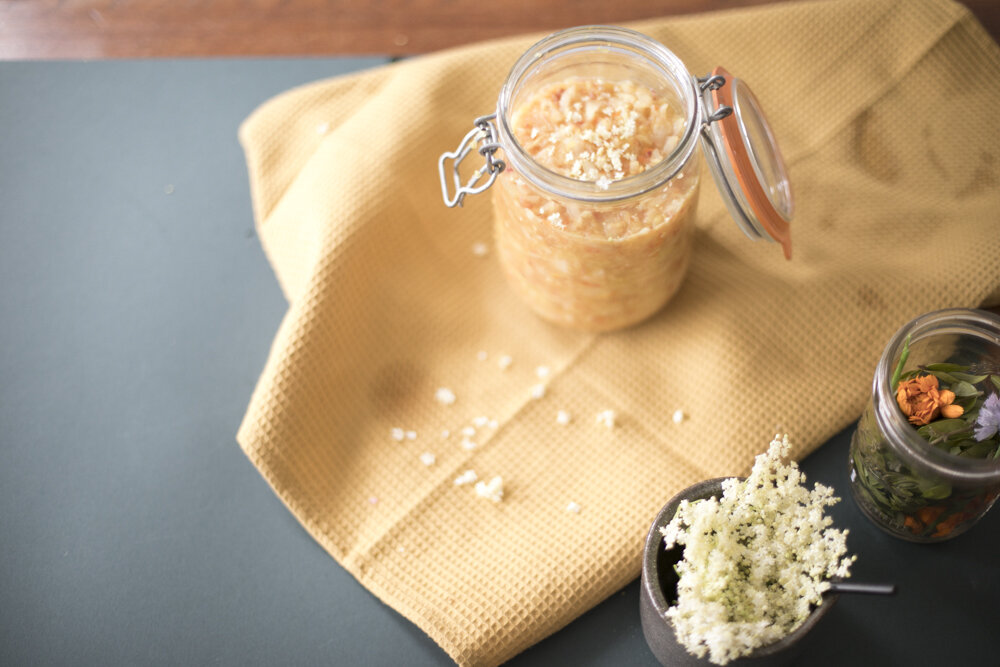Autumn means preserve
The art of food preservation is alive and kicking in the Balkans. It is a necessity and a habit that people are still passing down. People in the countryside prepare their delicious ferment and preserves and keep them in their pantries. For people living in cities, they have a choice of making their own or going to farmers markets where they can buy sauerkraut, turshiya, cordials and jams from their trusted producers. Come autumn, places can smell of lactofermentation.
Sauerkraut is a favorite condiment in colder months. In the Balkans we ferment whole cabbages in big barrels and make delicious dishes like stuffed cabbage leaves with beef mince, called sarma or shredded baked kraut called podvarak. Traditionally juniper berries, bay leaves or caraway seeds are added to cabbage. It is a very easy ferment to make at home in small quantity. You add 3% of vegetable weight in salt and massage the shredded vegetables until they start releasing their own juices that will help their fermentation. This is called dry-salting, meaning that you don't typically add any brine to it.
This recipe combines cabbage with turnip that on its own can be fermented into sauerruben. It deviates from the traditional spices we use in Serbia, but it has been a winner during holiday season last couple of years with its tangy and smoky flavour coming from chipotle.
Smoky sauekraut
1 green cabbage, shredded (keep cabbage core)
1 turnip, grated
1 tsp. of chipotle flakes
Sea salt
Weight your vegetables whole. You will need 3% of that weight in salt. Put the shredded cabbage in a bowl, sprinkle salt all over and start massaging it. You want to use as much force to help break vegetable cells and salt will aid in extracting liquid from the cabbage. Squeeze and massage for 5-10 minutes and you will notice after a few minutes the cabbage brine pooling in your bowl. Add grated turnip and chipotle flakes and massage for a few more minutes.
Pack tightly in an airlock jar, placing cabbage core on top to help submerge all the vegetables under their own brine.
Ferment on the kitchen worktop, burping the jar daily (tug on rubber of the airlock jar or briefly unscrew the lid to let gases escape). After 2 weeks, try it and if the taste is to your liking, transfer it to the fridge. If not, you can keep fermenting it on your kitchen worktop for 6 weeks or more; it will get more sour over time. Keep checking the taste every now and then. Once you are happy with it and ready to eat it, move it to the fridge.
Images by @markbrumell
